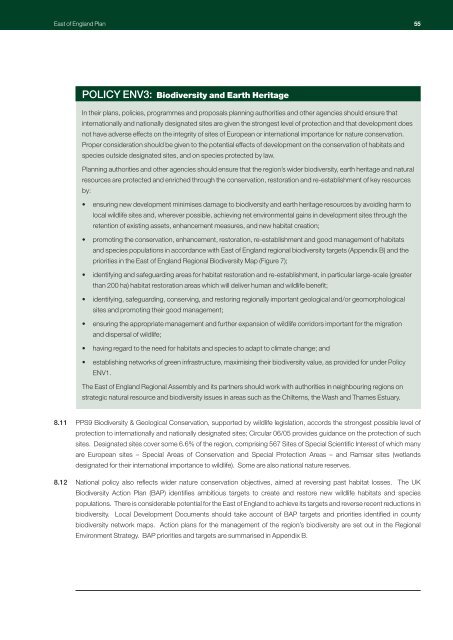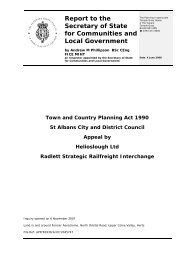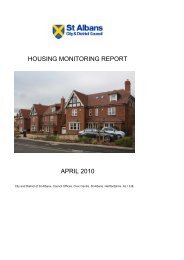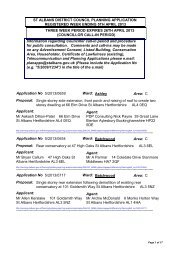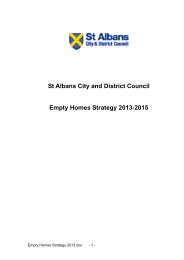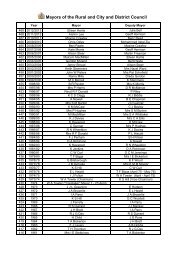RSS East Of England Plan - Broads Authority
RSS East Of England Plan - Broads Authority
RSS East Of England Plan - Broads Authority
You also want an ePaper? Increase the reach of your titles
YUMPU automatically turns print PDFs into web optimized ePapers that Google loves.
<strong>East</strong> of <strong>England</strong> <strong>Plan</strong> 55<br />
POLICY ENV3: Biodiversity and Earth Heritage<br />
In their plans, policies, programmes and proposals planning authorities and other agencies should ensure that<br />
internationally and nationally designated sites are given the strongest level of protection and that development does<br />
not have adverse effects on the integrity of sites of European or international importance for nature conservation.<br />
Proper consideration should be given to the potential effects of development on the conservation of habitats and<br />
species outside designated sites, and on species protected by law.<br />
<strong>Plan</strong>ning authorities and other agencies should ensure that the region’s wider biodiversity, earth heritage and natural<br />
resources are protected and enriched through the conservation, restoration and re-establishment of key resources<br />
by:<br />
• ensuring new development minimises damage to biodiversity and earth heritage resources by avoiding harm to<br />
local wildlife sites and, wherever possible, achieving net environmental gains in development sites through the<br />
retention of existing assets, enhancement measures, and new habitat creation;<br />
• promoting the conservation, enhancement, restoration, re-establishment and good management of habitats<br />
and species populations in accordance with <strong>East</strong> of <strong>England</strong> regional biodiversity targets (Appendix B) and the<br />
priorities in the <strong>East</strong> of <strong>England</strong> Regional Biodiversity Map (Figure 7);<br />
• identifying and safeguarding areas for habitat restoration and re-establishment, in particular large-scale (greater<br />
than 200 ha) habitat restoration areas which will deliver human and wildlife benefit;<br />
• identifying, safeguarding, conserving, and restoring regionally important geological and/or geomorphological<br />
sites and promoting their good management;<br />
• ensuring the appropriate management and further expansion of wildlife corridors important for the migration<br />
and dispersal of wildlife;<br />
• having regard to the need for habitats and species to adapt to climate change; and<br />
• establishing networks of green infrastructure, maximising their biodiversity value, as provided for under Policy<br />
ENV1.<br />
The <strong>East</strong> of <strong>England</strong> Regional Assembly and its partners should work with authorities in neighbouring regions on<br />
strategic natural resource and biodiversity issues in areas such as the Chilterns, the Wash and Thames Estuary.<br />
8.11 PPS9 Biodiversity & Geological Conservation, supported by wildlife legislation, accords the strongest possible level of<br />
protection to internationally and nationally designated sites; Circular 06/05 provides guidance on the protection of such<br />
sites. Designated sites cover some 6.6% of the region, comprising 567 Sites of Special Scientific Interest of which many<br />
are European sites – Special Areas of Conservation and Special Protection Areas – and Ramsar sites (wetlands<br />
designated for their international importance to wildlife). Some are also national nature reserves.<br />
8.12 National policy also reflects wider nature conservation objectives, aimed at reversing past habitat losses. The UK<br />
Biodiversity Action <strong>Plan</strong> (BAP) identifies ambitious targets to create and restore new wildlife habitats and species<br />
populations. There is considerable potential for the <strong>East</strong> of <strong>England</strong> to achieve its targets and reverse recent reductions in<br />
biodiversity. Local Development Documents should take account of BAP targets and priorities identified in county<br />
biodiversity network maps. Action plans for the management of the region’s biodiversity are set out in the Regional<br />
Environment Strategy. BAP priorities and targets are summarised in Appendix B.


